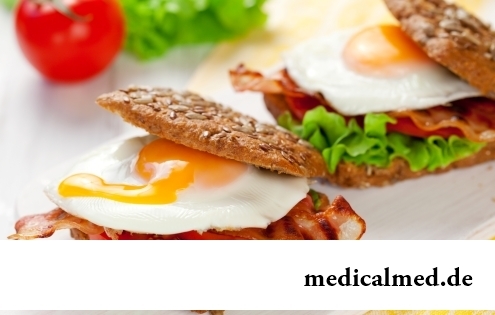





Glibenclamidum
Application instruction:
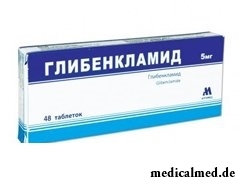 Glibenclamidum – peroral hypoglycemic means.
Glibenclamidum – peroral hypoglycemic means.
Form of release and structure
Dosage form – tablets: a ploskotsilindrichesky form, with dividing risky, color, white or white with a subtle gray or yellow shade (on 10 pieces in a blister strip packaging, in a cardboard pack of 1, 2, 3 or 5 packagings; on 20, 30 or 50 pieces in banks from polymer or dark glass, in a cardboard pack of 1 bank).
Active ingredient – glibenclamide, in 1 tablet – 5 mg.
Auxiliary components: lactoses monohydrate (sugar milk), magnesium stearate, povidone (polyvinylpirrolidone low-molecular medical), potato starch.
Indications to use
Use of drug is shown for treatment of a diabetes mellitus of the 2nd type at inefficiency of a dietotherapy at adults.
Contraindications
- Diabetes mellitus of the 1st type;
- Infectious diseases;
- The expressed renal failures and/or a liver;
- Disturbances of microcirculation in a severe form;
- Ketoacidosis, diabetic prekoma and coma;
- Period of pregnancy and breastfeeding;
- Carrying out serious surgeries;
- Hypersensitivity to sulfanamide drugs and derivatives of sulphonylurea.
With care appoint drug: to patients with pathology of a liver and/or kidneys, including in the anamnesis; at an alcoholism; in case of dysfunctions of a thyroid gland, adrenal glands; at feverish states.
Route of administration and dosage
Pill is taken inside in 20-30 minutes prior to or in 2 hours after food.
The doctor appoints a dose individually depending on severity of diabetes, age of the patient and level of a glycemia.
Usual average daily dose – from 2,5 to 15 mg, with frequency rate of reception 1-3 times. In rare instances drug is used in a dose more than 15 mg a day, it significantly does not influence increase in hypoglycemic effect.
Initial dose for patients of advanced age – 1 mg a day.
Initial dose of drug upon transition from guanyl guanidines – 2,5 mg a day.
For compensation of disturbances of carbohydrate metabolism after cancellation of guanyl guanidines Glibenclamidum dose in case of need can be raised on 2,5 mg every 5-6 days. Transition to the combined treatment by glibenclamide and guanyl guanidines should be planned in the absence of such compensation within 4-6 weeks.
Side effects
Use of drug can cause the following side effects:
- From endocrine system: a hypoglycemia up to a coma (correct purpose, observance of the mode of dosing and a diet reduces degree of probability of its development);
- From a nervous system: seldom – a headache, dizziness, fatigue, paresis, weakness, sensitivity disturbances;
- From the alimentary system: feeling of weight in epigastric area, nausea, diarrhea; seldom – a cholestasia, functional disturbances of a liver;
- From system of a hemopoiesis: seldom – hemopoiesis disturbances, development of a pancytopenia;
- Allergic reactions: itch, skin rash;
- Dermatological reactions: seldom – a photosensitization.
Special instructions
Treatment needs to be carried out under systematic control of content of glucose to blood and its daily removal with urine.
During administration of drug it is necessary to avoid alcohol intake, otherwise development of the expressed hypoglycemia, disulfiramopodobny reactions is possible.
In case of development of a hypoglycemia it is necessary to compensate deficit of glucose urgently. Patients in consciousness accept glucose or solution of sugar inside, at a loss of consciousness to the patient enter glucose intravenously or a glucagon – intravenously, intramusculary or subcutaneously. To avoid a recurrence, the food allowance of patients during this period has to be enriched with carbohydrates.
Medicinal interaction
Strengthening of hypoglycemic effect of drug can be promoted by simultaneous use of sulfonamides of long action, beta adrenoblockers, Allopyrinolum, anabolic means, Cimetidinum, cyclophosphamide, Clofibratum, Isobarinum, monoamine oxidase inhibitors (MAO), salicylates, tetracyclines, chloramphenicol, etanolsoderzhashchy drugs.
Decrease in effect of Glibenclamide and risk of development of a hyperglycemia in the patients who are at the same time accepting Chlorpromazinum, barbiturates, diazoxide, fenotiazina, Phenytoinum, acetazoleamide, glucocorticoids, a glucagon, sympathomimetic means, indometacin, nikotinata in high doses, saluretics, contraceptives for intake and estrogen, lithium salts, hormones of a thyroid gland, high doses of purgatives is possible.
Terms and storage conditions
To store in the unavailable to children, dry, protected from light place at a temperature not above 25 °C.
Period of validity – 3 years.
The stomach of the person not bad copes with foreign objects and without medical intervention. It is known that the gastric juice is capable to dissolve even coins.

Diapers for adults – individual one-time means of hygiene which in some situations is irreplaceable, and from such situats...
Section: Articles about health
For anybody not a secret that our country is one of the most "drinking" in the world. At clear understanding that the use of hard alcoholic drinks – occupation extremely harmful, most of Russians belong to alcoholism with unjustified loyalty. These...
Section: Articles about health
Deciding to get rid of an addiction, not all imagine what effects it is necessary to face. Process of refusal of smoking causes quite essential discomfort in most of people: differences of mood, a sleep disorder, fatigue, decrease in physical and intellectual activity and a number of other symptoms reducing quality of life. Abstinence can be strong: an essential part of attempts comes to an end leaving off smoking failure, and people are returned to the use of cigars...
Section: Articles about health
Life of the modern woman is very difficult. Opportunities to realize itself are wide: it not only education and career, but also most differently...
Section: Articles about health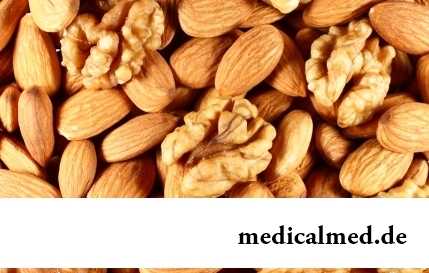
For the last decades the diabetes mellitus of the second type became really world problem. The number of cases annually increases, and average age of patients for whom the illness is diagnosed, steadily decreases. Specialists consider that one of osno...
Section: Articles about health
Tick-borne encephalitis – one of the most dangerous viral diseases which causative agents transfer and is given to people by ixodic mites. These are the small blood-sicking insects living in the considerable territory of our country. The person bitten by a tick can catch also erlikhiozy, bartonnelezy, babeziozy, mycoplasmosis and Lyme's disease. As well as encephalitis, these illnesses affect the central nervous system, and as specific antiviral therapy does not exist, the forecast very to a neuta...
Section: Articles about health
The main role in development of a peptic ulcer of a stomach and duodenum the bacterium Helikobakter plays pilor. Activity and Wuxi...
Section: Articles about health
Diseases of joints often begin imperceptibly for the person. The first stages of destruction of the cartilaginous tissue providing soft and free sliding of heads of bones in joint bags proceed slowly and absolutely without serious consequences. Especially unpleasantly for that this пр...
Section: Articles about health
Bulimia and anorexia, are heavy deviations of a feeding behavior, become a cause of death of patients much more often than all other nervous breakdowns combined. In 60% of cases two illnesses accompany each other: patients feel horror before danger of set of excess weight and try to refuse as often as possible food, but periodically suffer from attacks of sudden hunger and an uncontrollable overeating. Each patient with anorexia and bulimia needs the help qualified пс...
Section: Articles about health
Maternal milk is the best food for the newborn. It is the unique natural product containing optimum set...
Section: Articles about health
Small appetite at the child – the complaint which pediatricians should hear practically from each mother. Most often it is carried to the category of children's whims, however the refusal of food in certain cases can be to alarming symptoms therefore it cannot be ignored....
Section: Articles about health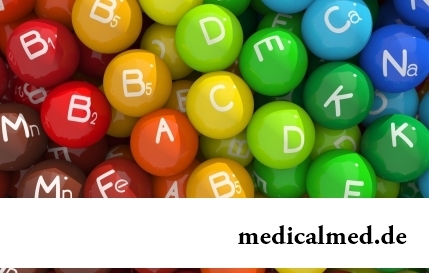
Vitamin complexes belong to the most popular drugs, probably, in our country there is no person who was not hearing about advantage of vitamins and never their accepting. The more vitamins, the better, we consider and as it appeared, cruelly we are mistaken. Whether vitamins, whether so harmlessly general hobby for polyvitaminic complexes and whether it is possible to do without them are so useful? Let's try to understand....
Section: Articles about health
Nightmares belong to the most unpleasant frustration. Statistically, they happen at 4% of adults, and almost at 70% of children and teenagers. During a nightmare of people dreams himself in extremely difficult, life-threatening situation. He wakens suddenly, in a condition of a fright, and, as a rule, remembers the dream distinctly. The feeling of depression and alarm does not release throughout the day, creating hindrances for work and normal communication. If such episodes repeat often, can р...
Section: Articles about health
It is pleasant to state a possibility of improvement of quality of life of people with problems of functioning of secretory system. By efforts that...
Section: Articles about health
Bees – really unique beings. Practically all products of their life activity are used by the person. Since the most ancient times medicinal properties of honey and other substances received in the course of beekeeping are known. The fact that all these пр is especially significant...
Section: Articles about health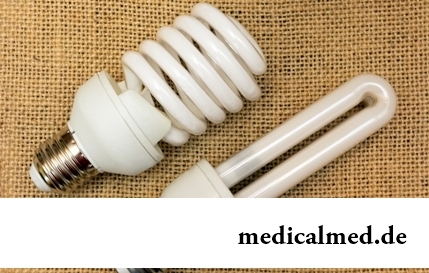
Energy saving lamps are one of the most popular products of innovative technologies, and there is no wonder: they much more economic also are more long-lasting than usual filament lamps. At the same time there are fears that energy saving bulbs can become the reason of emergence of problems with health. Unfortunately, some of similar opinions have the real reasons....
Section: Articles about health
With age in a human body harmful substances collect. We receive them with food and water, at inhalation contaminated air...
Section: Articles about health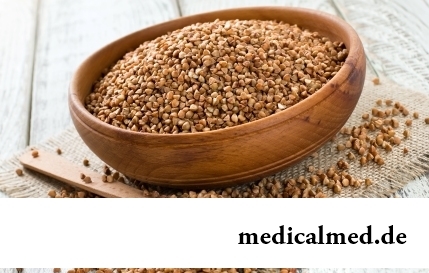
History of cultivation of a buckwheat contains more than five thousand years. Grain which is received from this plant is used for preparation of porridges, soups, baked puddings and puddings, do flour which is one of the main ingredients of the noodles popular in of it...
Section: Articles about health
All are familiar with cold, and practically everyone believes that he has sufficient knowledge and experience that correctly to treat it. In practice most of people makes mistakes in attempts to get rid of rhinitis, and divides numerous delusions it....
Section: Articles about health
Dogrose – one of the most widespread adornment and medicinal plants growing practically in all territory ours...
Section: Articles about health
Beauty shop – the place which is associated only with positive emotions: joy, pleasure, relaxation. However visit of salon where work with biological material of clients, not always harmlessly is conducted. Today it is known Bol...
Section: Articles about health
During foot walks blood moves on vessels more actively and one and all bodies are supplied with a large amount of oxygen. It affects the state of health of the person very positively....
Section: Slideshow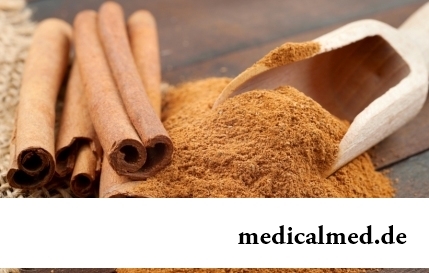
Ayurveda - the most ancient tselitelsky practice which came to us from India. It represents the doctrine about maintenance physical, ps...
Section: Articles about health
Practice of use of table salt in the therapeutic purposes contains not one century. Applications which do by means of the fabric impregnated with saline solution are considered especially effective. They possess antibacterial and antiinflammatory эффек...
Section: Articles about health
In consciousness of our many compatriots idea that folk remedies if are no more effective, than medicinal "chemistry" strongly took roots, then are precisely less harmful. Unfortunately, it is not always fair: some methods of treatment consecrated with "century national experience" can work so on the patient that it will need urgent intervention of physicians....
Section: Articles about health

